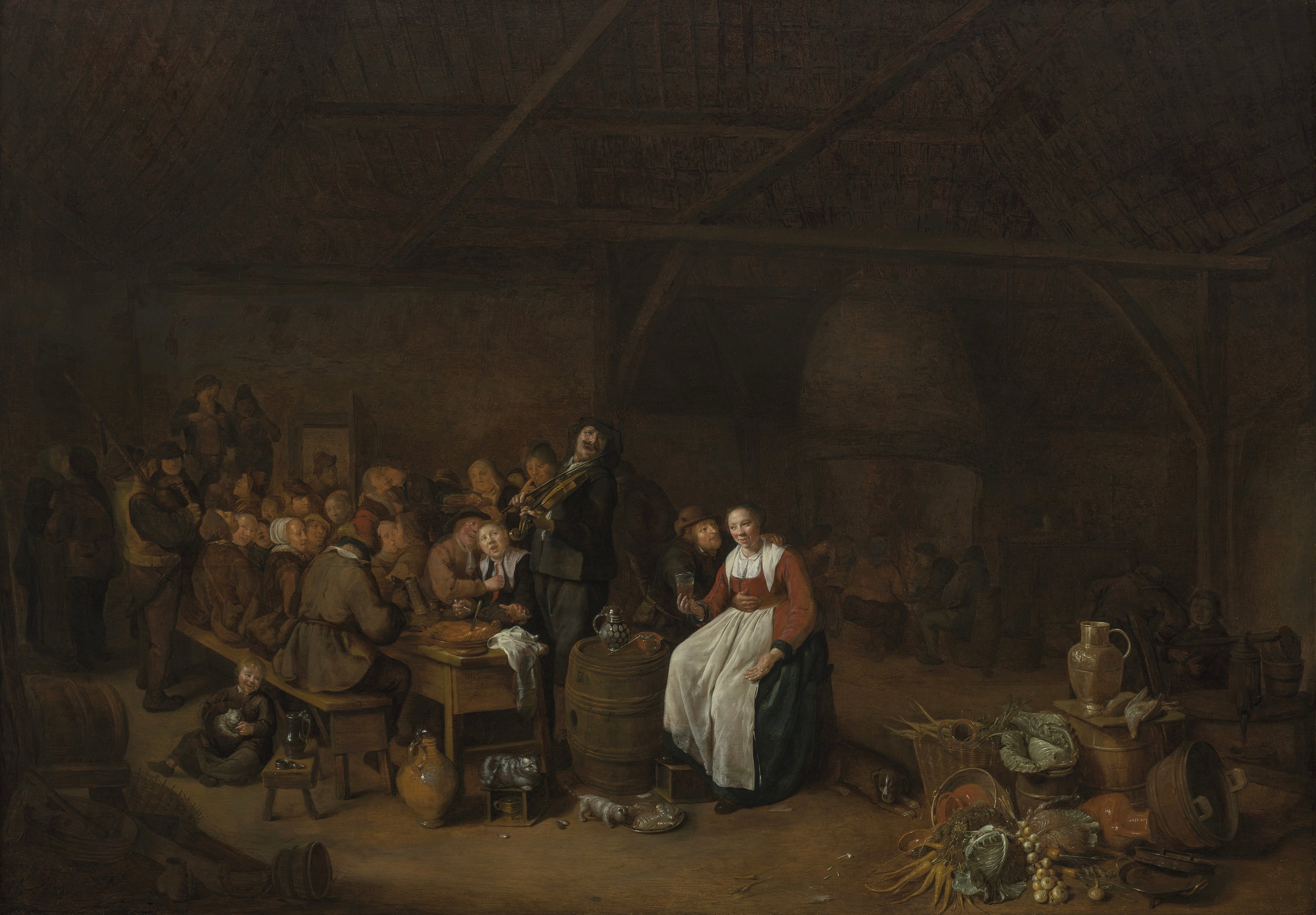
A peasant celebration shows sensual debauchery as a cautionary tale - full of symbols for vice and moral decay.
Morality and pleasure
A barn with its cavernous wooden structure is the scene of a peasant celebration. For the meeting described here, which is supposed to make the harshness of everyday life forget for a moment, the place was not specially prepared, nor have all the persons in the room gathered together at the table. In the dark fringes, schematically captured peasants squat, who, like the others, are thinking only of one thing: sensual pleasure.
In contrast, bright light falls on the revellers in the foreground to the left. Accompanied by the sounds of rural music, they have taken their seats on the simple benches and form a literally closed group. Sitting away from them, a couple – highlighted here through space and colour – emphasises the central statement of the image with their unambiguous gestures: it is all about the kind of dissolute lifestyle with its propensity for sex and alcohol that is regularly denounced from the pulpit. This reminder, addressed to an urban audience, is complemented by the many drinking vessels, including a blue glazed stoneware pitcher; stoneware was a popular, imported material from the Rhine region. At that time, smoking was also considered a vice comparable to drinking, as indicated by the broken clay pipe on the ground.
Hence a thoroughly negative symbolism dominates the painting and even applies to the domestic animals: the cat, which appears twice here, stands for greed, the furtive dog for anger, just as lust is one of the “seven deadly sins”. The foreground on the right is filled by an almost still-life arrangement with onions and radish, the disorderly nature of which also expresses the low moral level of the action.
The numerous depictions of peasant life as they began to appear in the Netherlands from the 16th century onwards are not literal representations of social reality. As a resident of Haarlem, where many paintings of the Dutch peasant genre were produced, the artist Jan Miense Molenaer was able to draw on a tradition that had been developing in rich abundance ever since the 16th century, the period of Pieter Bruegel the Elder.
Text: Ulrich Becker